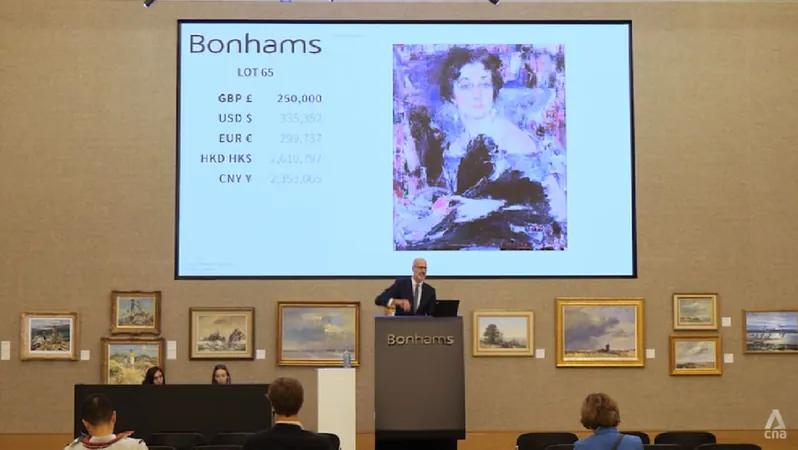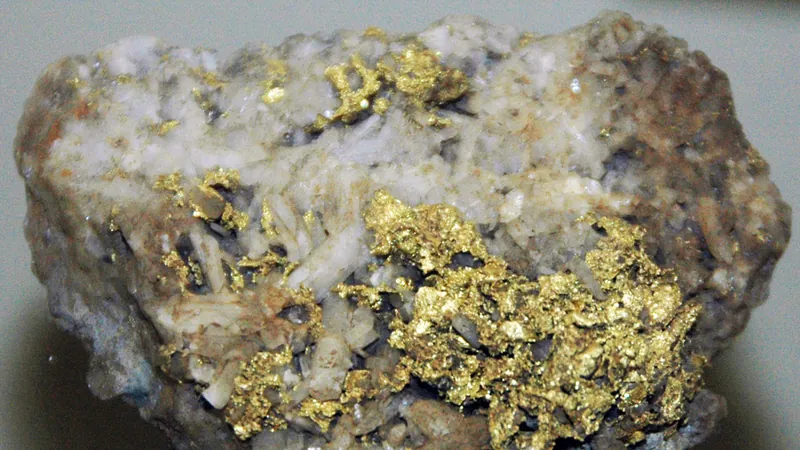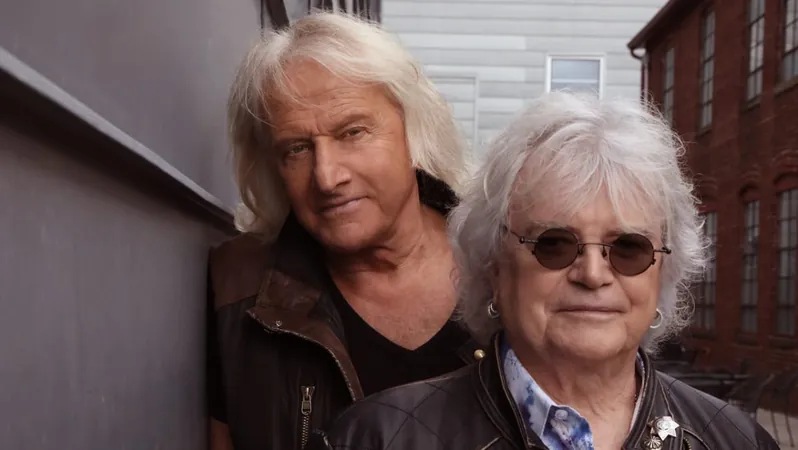
High-End Art Market Faces Major Sales Decline Amid Global Economic and Political Turmoil
2024-10-08
Author: Daniel
High-End Art Market Faces Major Sales Decline Amid Global Economic and Political Turmoil
LONDON: The realm of high-end art is witnessing a significant downturn, as auction prices for prestigious artworks have plummeted. Recent reports from the art market research firm ArtTactic reveal that major global auction houses experienced a staggering year-on-year sales decline of 17.5% last year, primarily driven by economic challenges and geopolitical instability.
In the exclusive auction house sector, high-value transactions, particularly those exceeding £1 million (approximately $1.3 million), are crucial. Although these high-value lots represent only about 5% of total sales, they account for more than 70% of the auction houses’ overall revenue. This disproportionate reliance means that when high-end artworks fail to attract buyers, the financial repercussions for these auction houses can be severe.
Economic and Political Pressures Take Toll on Buyer Confidence
According to India Phillips, UK managing director of Bonhams, emotional factors play a significant role in art market engagements. "Art deals in passion, and mood is a significant component of that," she noted. With a landscape colored by numerous political events, including the UK general election and the impending U.S. presidential election, many potential buyers are exhibiting caution in their purchasing decisions. Phillips emphasized that political changes can diminish confidence and hinder people's ability to make swift decisions.
Notably, auction powerhouse Christie’s recently inaugurated its Asia-Pacific headquarters in Hong Kong and held a sale featuring masterpieces from iconic artists Claude Monet and Vincent van Gogh. Unfortunately, both pieces achieved prices at the lower end of their estimates, highlighting a trend of disappointing sales in high-end art.
Sellers Hesitant to Accept Lower Prices
For those auctioning rare and valuable pieces, the pressure is on; sellers often have a single opportunity to secure the best price at auction. Consequently, many are opting to wait for potentially more favorable market conditions rather than accepting lower bids. Insights from industry surveys suggest that optimism for market recovery may not materialize until next year.
In stark contrast to the high-end sector, the mid-tier art market appears to be relatively unaffected. Chiswick Auctions in West London reports stable sales figures, indicating that mid-market auction houses might better weather the ongoing economic storm. "The majority of auction houses operate in the mid-market and find stability through selling a consistent range across various price points," commented Nick Greenwood, executive director of Chiswick Auctions.
A Shift to Online Auctions and Changing Consumer Trends
The auction landscape is evolving, particularly following the COVID-19 pandemic, which necessitated a digital pivot. Auction houses have since refined their online platforms, allowing bidders from around the world to engage in sales. Bonhams reports a remarkable 90% of its lots sold via online bidding.
Additionally, new generations of buyers are reshaping the market. Millennials and Generation Z collectors are increasingly influential, expanding their interests beyond traditional fine art. According to Lindsay Dewar, COO of ArtTactic, categories such as wine, jewelry, watches, and even sports memorabilia are gaining traction. "You can now find NBA sweaters at Sotheby’s, reflecting a burgeoning market for collectibles that diversifies the pool of potential buyers," she explained.
As the high-end art market grapples with these challenges, the successful adaptation to new consumer trends and sales formats may determine which auction houses thrive in this evolving environment. Only time will tell if these strategies will yield a recovery in sales or if the sector will endure a prolonged slump.




 Brasil (PT)
Brasil (PT)
 Canada (EN)
Canada (EN)
 Chile (ES)
Chile (ES)
 España (ES)
España (ES)
 France (FR)
France (FR)
 Hong Kong (EN)
Hong Kong (EN)
 Italia (IT)
Italia (IT)
 日本 (JA)
日本 (JA)
 Magyarország (HU)
Magyarország (HU)
 Norge (NO)
Norge (NO)
 Polska (PL)
Polska (PL)
 Schweiz (DE)
Schweiz (DE)
 Singapore (EN)
Singapore (EN)
 Sverige (SV)
Sverige (SV)
 Suomi (FI)
Suomi (FI)
 Türkiye (TR)
Türkiye (TR)